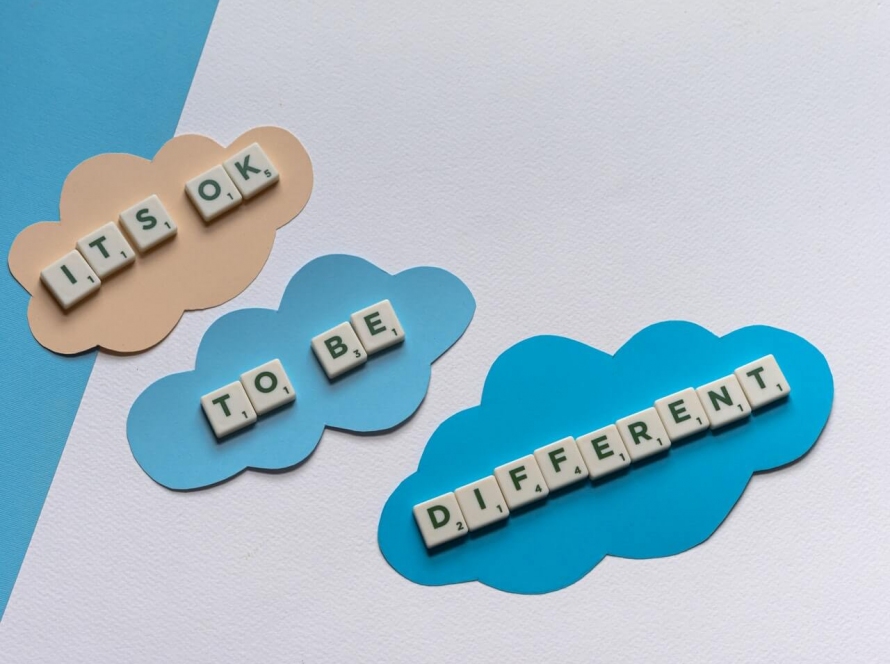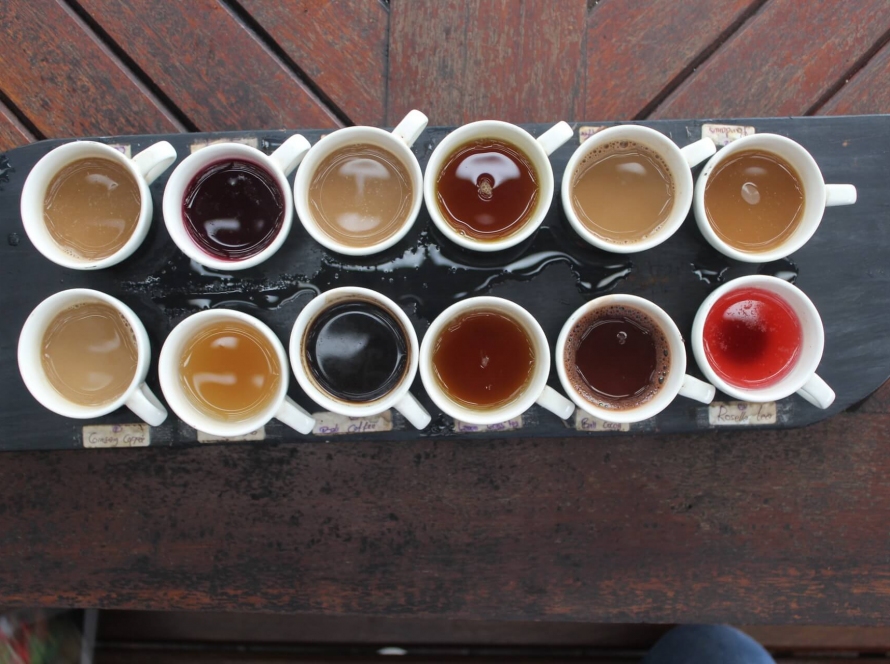How we think and feel about ourselves often reflects on our well-being and its various aspects – that is, the emotional, physical, psychological and social elements of our lives. While a lot of words related to this understanding are prevalent in popular culture, let’s try to understand what some of these mean from a scientific point of view:
- The opinion and perception we have of ourselves is known as the self-concept (simply speaking, our concepts related to the self). Self-concept consists of a few aspects covering all the questions we have regarding our existence and identity.
- Just like we value the people around us, we also put a value and set a standard for ourself; this encompasses who we believe we are and the meaning we draw from perception of our actions. This standard relates to our self-esteem. As the name suggests, it simply means how much we esteem i.e., value.
- One of the aspects on which self-esteem depends on is the self-image. Self-image is the mental picture of our own abilities, personality and appearance.
- An aspect of ourselves in the self-image are the thoughts and feelings about our body and appearance, which is known as our body image. The body image is known to be influenced by the prevalent standard of beauty (and sometimes, perfection) in a given culture. Different cultures may then value different standards of beauty, attaching a higher value to certain types of bodies than others.
The ‘body image’ of a person is also the belief a person has about their own aesthetics and sexual attractiveness. It can be positive or negative relating to the overall appearance or specific parts of one’s body, depending on the level of satisfaction someone holds about themselves. A positive body image is when there is acceptance of one’s body as well as an understanding that concepts such as those of beauty, perfectionism, etc can be quite subjective.. This may give rise to acknowledgement and acceptance of how the body naturally is, lessening the stress that can come up if one’s appearance is not in sync with the stereotypes recurrent in one’s culture..
One the other hand, dissatisfaction with one’s appearance can be related to a ‘negative’ body image, ranging from:
- Disliking your body weight,
- Considering your features such as nose, ears or hands as unappealing,
- Comparing with others and feeling inadequate or less,
- Being uncomfortable in your body,
- Negative thoughts such as “I am ugly or unattractive”,
A negative body image can be related to a range of mental and physical health concerns. For instance, someone feeling (or being told) they are overweight might decide to lose, or not gain further weight by not taking in the proper nutrition their body requires, or use practices such as ‘purging’. On the other hand, someone feeling they are unattractive may experience a reduced self-esteem, and hence a loss of self-confidence, or even symptoms of anxiety and depression.
Some other mental health concerns that are commonly associated with body image issues are mentioned below:
- Mood disorders: health conditions in which the emotional state or mood is distorted or inconsistent with your circumstances and interferes with your ability to function
- Gender dysmorphia: distress or discomfort sometimes experienced by individuals whose gender identity is different from that assigned at birth
- Body dysmorphia: distress due to a perceived physical anomaly, such as a scar, the shape or size of a body part, or some other personal feature
- Disordered eating and/or eating disorders (described in detail below)
- Self-harming tendencies and behaviours
- Anxiety disorders and Obsessive Compulsive Disorder
Recent studies have shown that children as young as 3 years old can develop a negative body image. It has also been reported that the negative body image affects individuals differently across age groups, and that females are at a higher risk of dealing with a negative body image than males.
Today, body image of teens is affected by multiple factors such as social media, peer pressure, cultural stereotypes, familial pressure to perform and look a certain way, etc. During such an age range when one’s social identity is just beginning to form, and making friends, fitting into a group and getting liked and accepted by others becomes more of a priority, having a negative body image can lead a to low self-esteem, and in the long run, lead to serious mental issues. Eating disorders at this age are a common result of having a negative body image where people indulge into unhealthy eating patterns in order to feel and look “good”. A few of these unhealthy eating patterns are:
- severely reducing food intake to lose weight (as seen in anorexia nervosa)
- purging out the eaten food to lose weight (as seen in bulimia)
Other than the eating disorders, a few other signs* which reflect a negative body image in teens are
- continually comparing their body with others
- not wanting to leave the house because of the way they look
- not doing activities or trying new things
- obsessing about losing weight, or about specific parts of their body
- spending lots of time looking in the mirror or taking photos and looking for changes or imperfections
- attempting to cover up how they look with makeup
- sudden mood swings or irritability that is not in keeping with their usual behaviour
On the other hand, dissatisfaction with the body in adults is reported to be associated with increased likelihood of depressive symptoms, psychological distress and eating disorders. Survey shows that 34% of adults (28% of men and 40% of women) said they felt anxious and 35% said they felt depressed (25% of men and 45% of women) because of their body image. Increased self-consciousness and low self-esteem developing from a negative body image is said to affect relationships and sexual wellbeing in adults.
When dealing with such concerns and symptoms, it may be helpful to build self-awareness about the underlying perceptions and beliefs that are related to insecurities or dissatisfaction of one’s appearance.This journey could be different for different individuals; while some could benefit from working on a more positive.body image that is associated with lots of self-acknowledgement, self-love and self-care, others have known to rather benefit from a concept known as ‘body neutrality’.
What’s the difference, you ask?
While developing a more positive body image can include working on:
- inculcating thoughts like ‘I am beautiful no matter how I look’
- a positive attitude and positive thinking wherein less comparisons and more acceptance is cultivated, along with the understanding that everyone is beautiful
- boosting up self-confidence and self-esteem,
- eating healthy and engaging in activities that make one happy,
- looking at yourself as a whole and not focusing on specific parts,
- remembering that beauty doesn’t fit into stereotypes and categories
The ‘body positivity’ movement emerged with the wish to encourage individuals to feel better and even love their bodies, regardless of what they looked like. Some have since criticized that this approach may not work for everyone, especially in situations when one might feel insecure and blame themselves for not being able to love themselves as they ‘should’. In the wake of these opionions the ‘body neutrality’ movement grew to rise which propounded the following ideas related to a more ‘body neutral’ image:
- inculcating thoughts like ‘I may or may not look beautiful – my appearance is not relevant to my worth, value and satisfaction in life.’
- encouraging acceptance of the body as it is, while appreciating its functions and abilities over its appearance
- understanding that even in times when you don’t love your body, you can still learn to accept it
- focusing on certain things and activities that make you feel good – such as moving your body – and not necessarily with the intention of losing weight or to alter your appearance
Both of the above are known to be helpful; however what might work for one, might not work for all. What is important within both approaches, is the need to pay more attention to one’s requirements and work on one’s own relationship with various essential elements – like your body, food, your mind and others – for a richer and healthier experience of one’s life.
* while the signs mentioned here may be used to educate oneself, these are in no way meant to be a substitute to a professional diagnosis. If you feel that you or someone you know may be dealing with a mental health condition, you could choose to talk to them about your concerns and suggest the help of a mental health professional.
This article was written by a trainee psychologist. But we were humans long before we began our training, and so are always looking to learn better! If you found that any of the above is inaccurate, irrelevant or unhelpful, or would like to suggest ways to make this article more helpful in any way, please let us know in the comments below.
Read the article, and wondering what’s next ?
- I want to take action now: If reading the above information has led you to decide that what you need is professional help, here’s a little bit about how our professionals work in case you would like to schedule a free consultation with us: our professionals’ work is based on a ‘recovery-oriented’ model, which believes in providing a space where each individual feels in charge of their own meaning of recovery from mental health concerns/illness. The aim of support isn’t just to reduce symptoms or to go back to the level of functioning that was, but rather to learn to emphasize one’s resilience and to hold space for those in distress as one is attempting to achieve short- and long-term recovery/life goals
- I need to learn more: If you wish to know more about Therapy, please go through these FAQs; you could also look up articles on our blog
- I want more help about how to broach the topic of my mental health with friend/loved one as/before I book a session.
- I wish to know about the services related to this blog.



